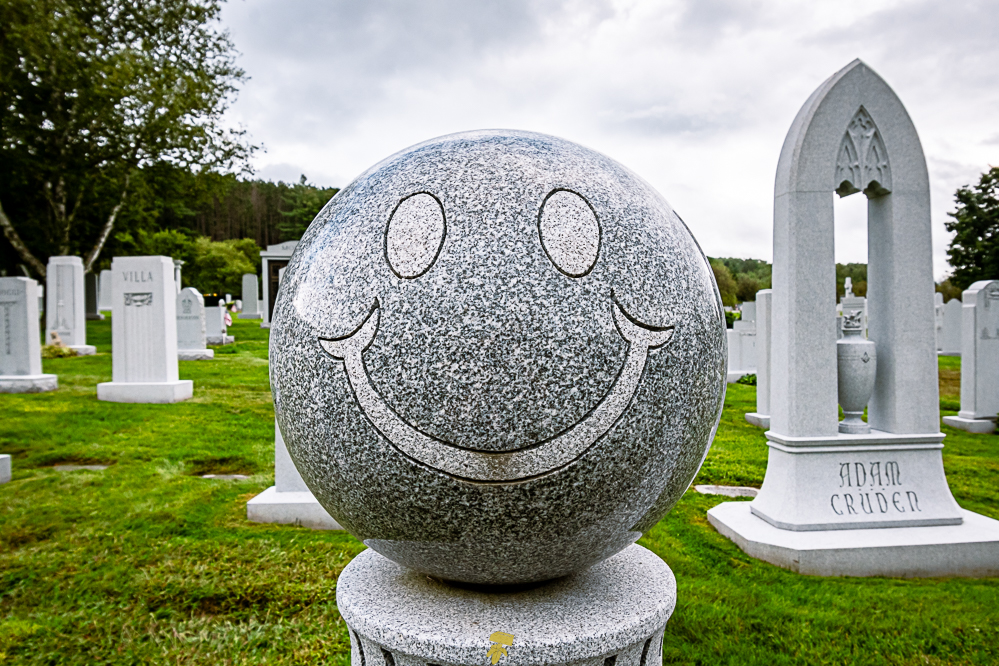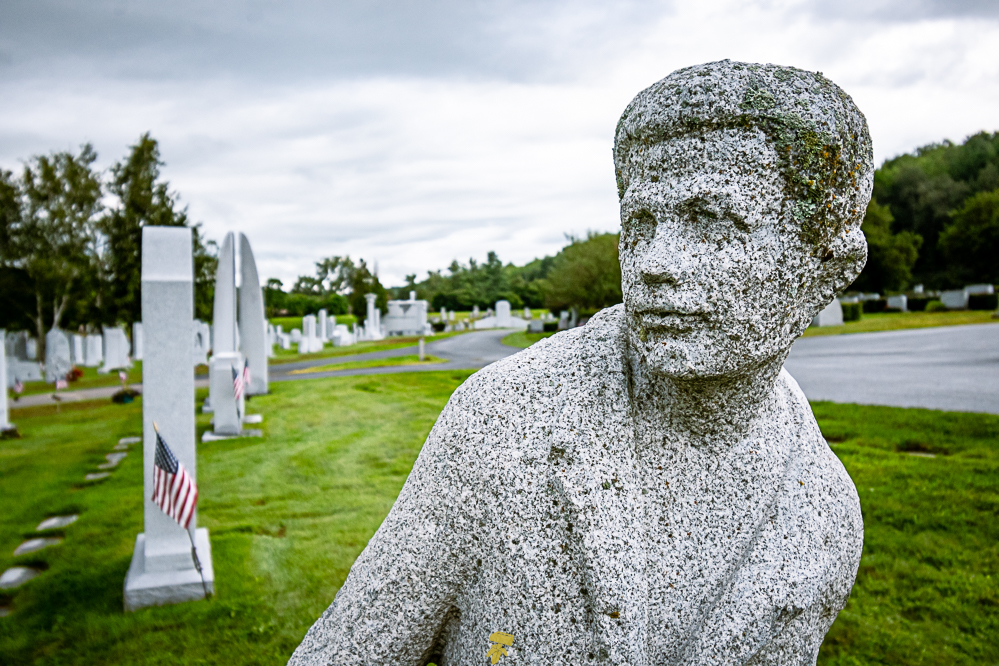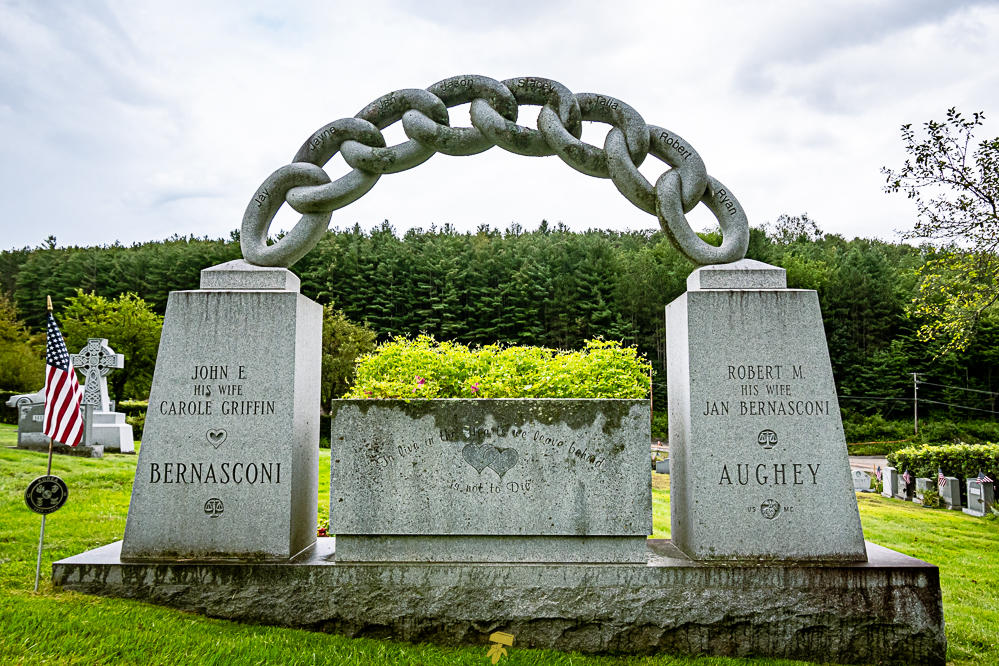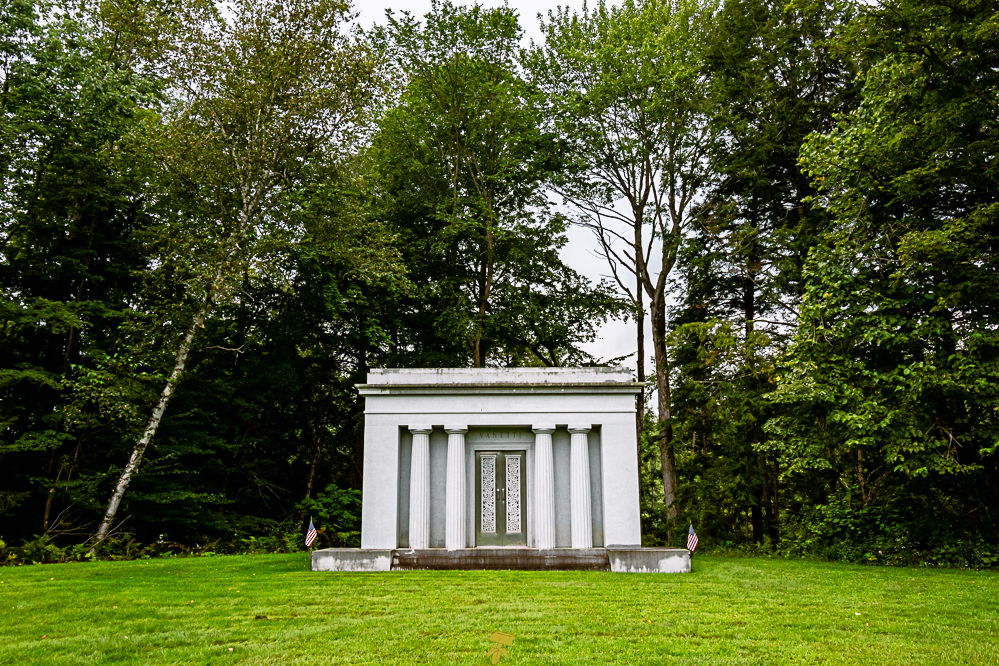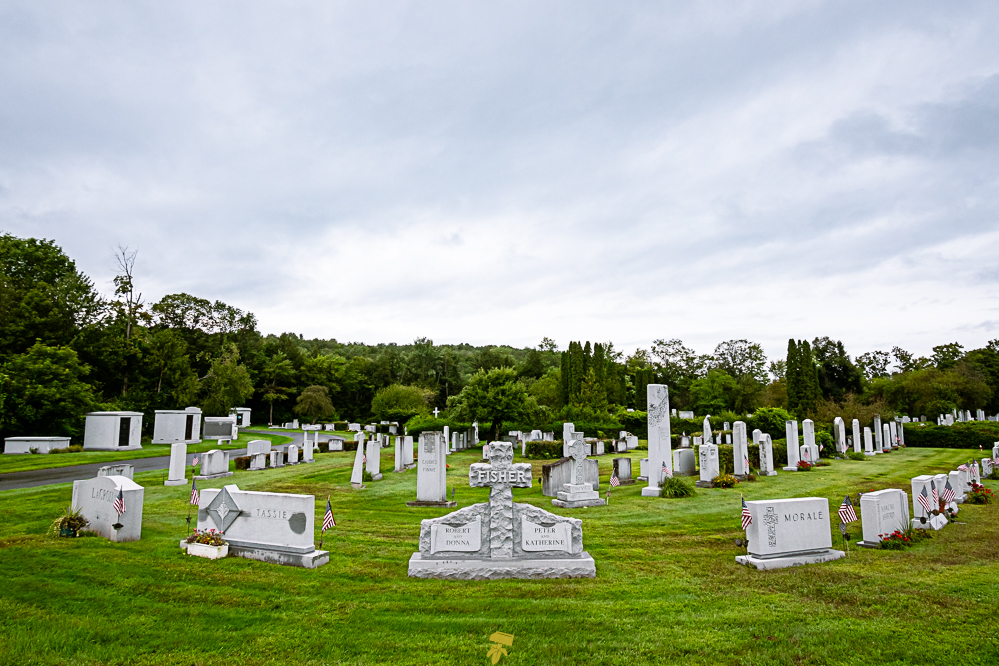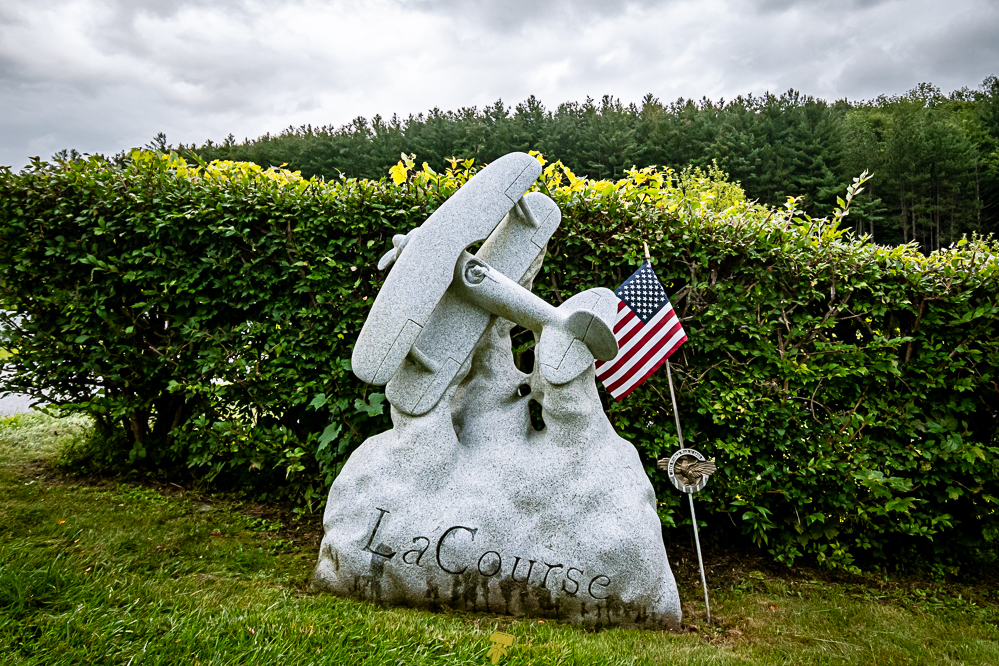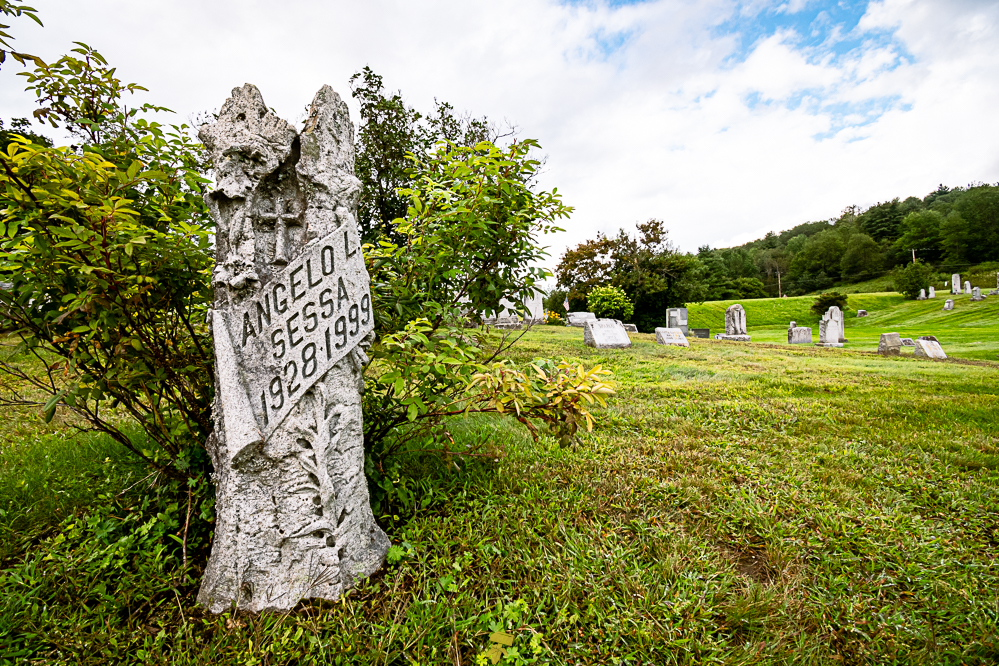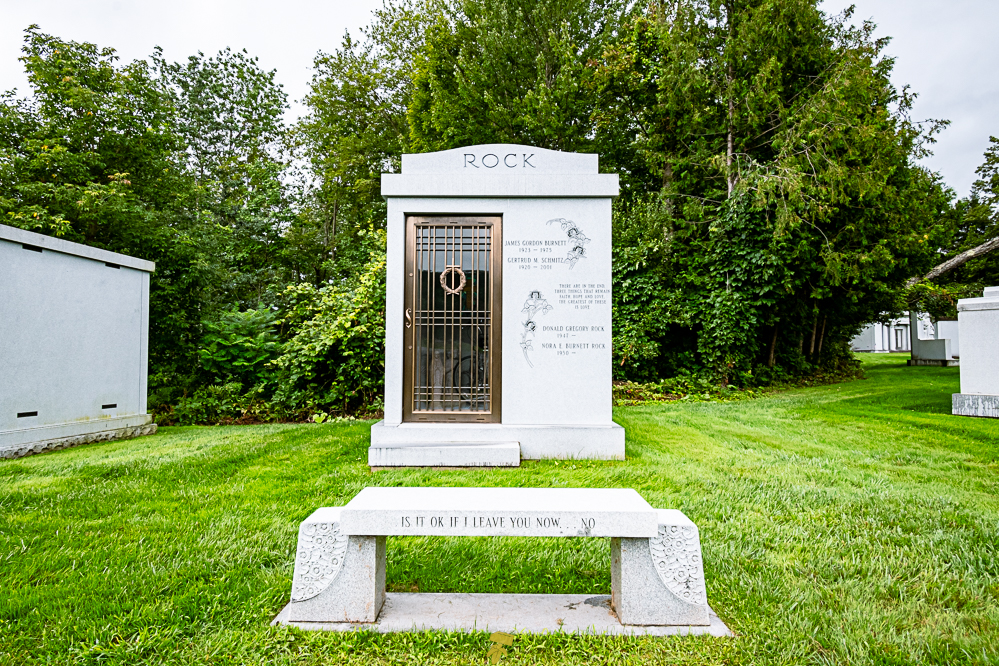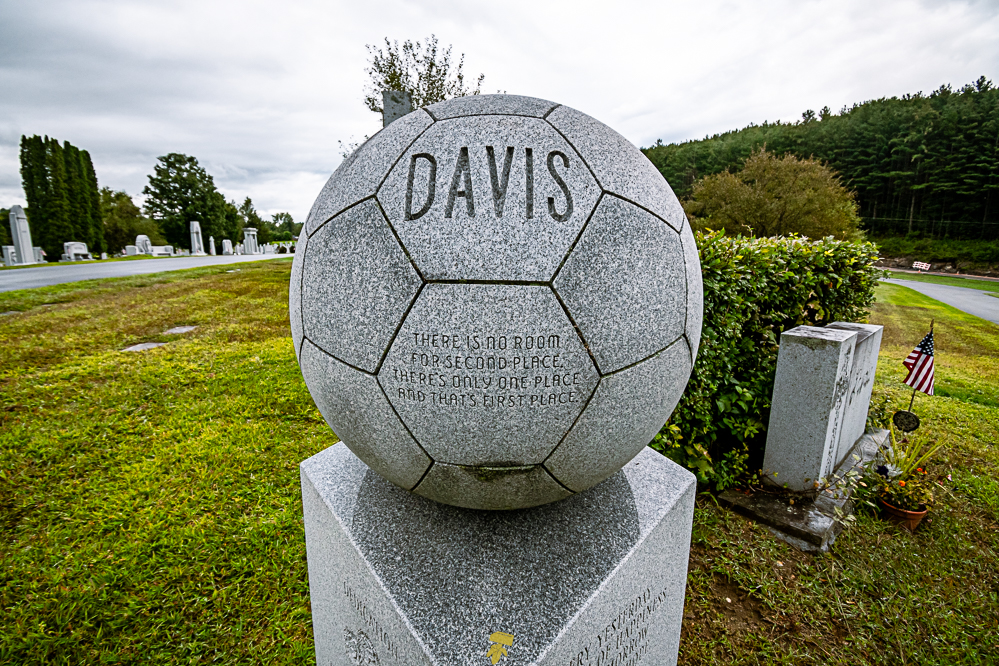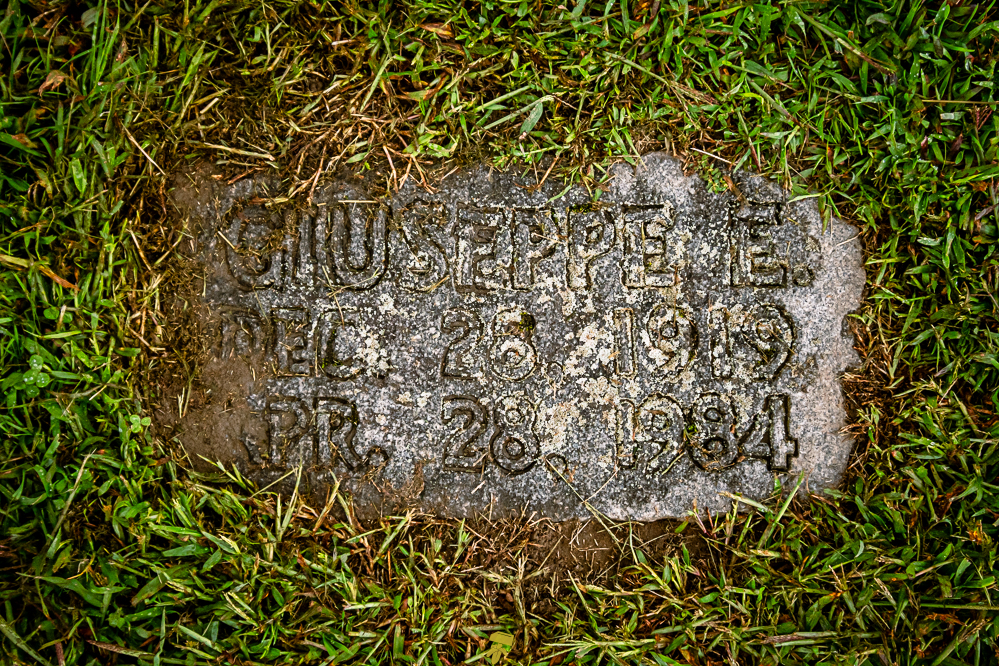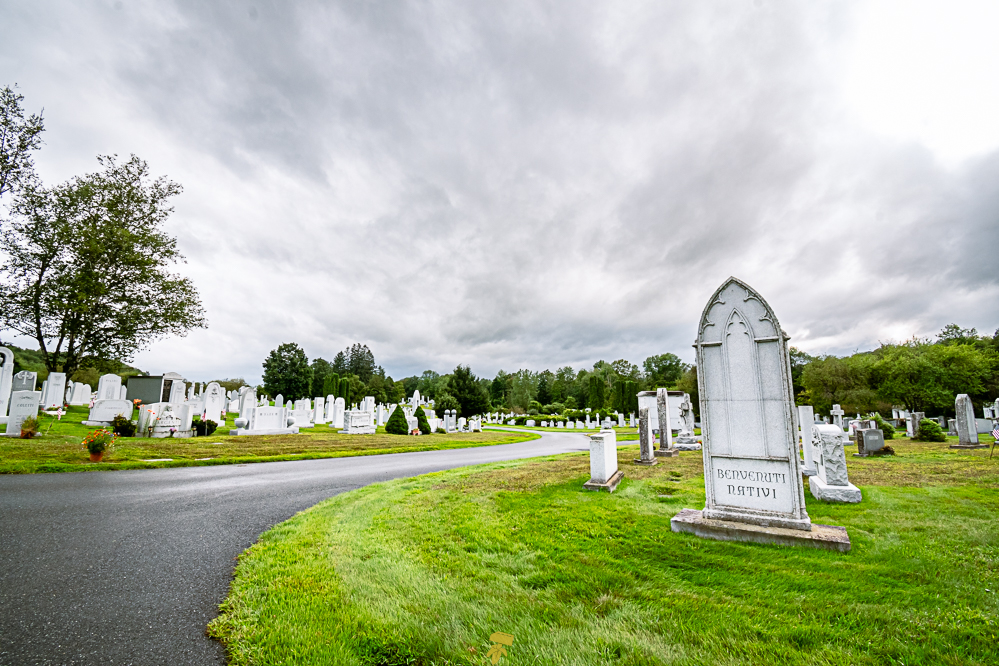The quality of granite from this area lends to better shaping and carving, which led to skilled artisans from around the world to relocate to Barre to become a part of a booming granite industry. Many of the markers are examples of some of the finest memorial design and granite craftsmanship ever produced.
There are more than 10,000 tombstones and memorials located inside the rural cemetery with all of its stones made from granite from Barre, Vermont. The quality of granite from this area lends to better shaping and carving, leading to skilled artisans from around the world relocating to Barre to become a part of a booming granite industry. Many of the markers are examples of some of the finest memorial design and granite craftsmanship ever produced.
Located in the “Granite Capital of the World”, Hope Cemetery was established in 1895, and designed by the renowned landscape architect Edward P. Adams. There are more than 10,000 tombstones and memorials located inside the rural cemetery with all of its stones made from granite from Barre, Vermont. The world’s largest “deep hole” granite quarry the E. L. Smith Quarry or more popularly known as the Rock of Ages Quarry is located here.

Barre is known for their fine “Barre Gray” granite, composed of feldspar, mica, and quartz, which is sought after worldwide for its fine grain, even texture, and superior weather resistance. Throughout the country, the main use for granite, the earth’s most plentiful and durable stone, is tombstones and memorials with lower quality rock supplying curbstones. Its exceptional carving capacity makes “Barre Gray” ideal for stone sculpture, allowing for intricate features and fine detail.
Hope Cemetery has many interesting stones with many designed by the occupants of the graves. There is a soccer ball, smiley faces, a chair, a Superman emblem, an etching of the Yellow M&M, and a half-size replica of race car #61 operated by local driver Joey Laquerre, Jr., who died in a 1991 snowmobile accident. The more “basic” stones cost about $2,000 while some of the more elaborate and larger monuments can run upwards of +$30,000.

Ironically enough, Barre had a high death rate in the late 1800s and into the 1900s due mainly to silicosis, a respiratory disease caused by granite dust. The Spanish Flu epidemic from 1918-1919 added to the death toll. Many sculptors, aware of their forthcoming fate, would often sculpt their very own monument to showcase their talent.

